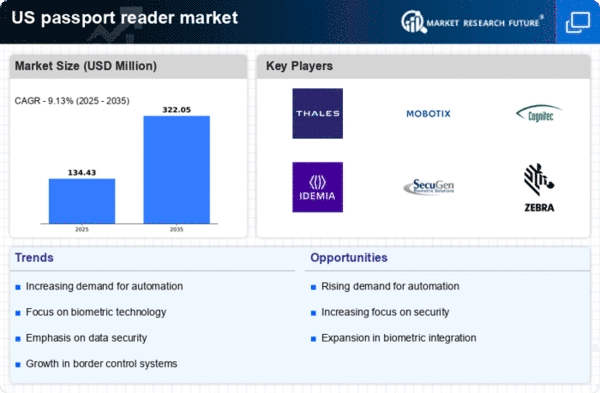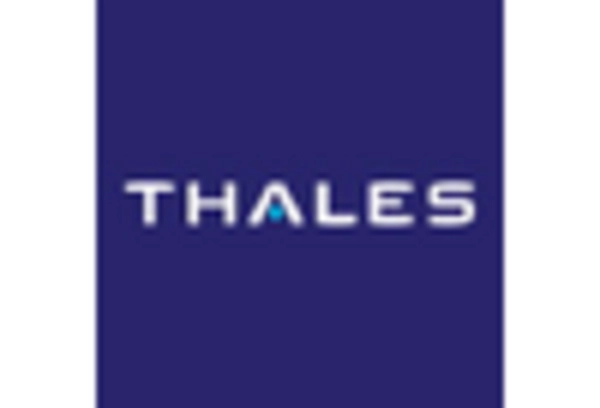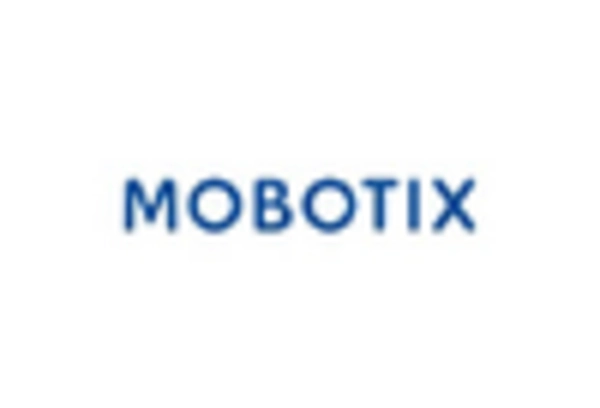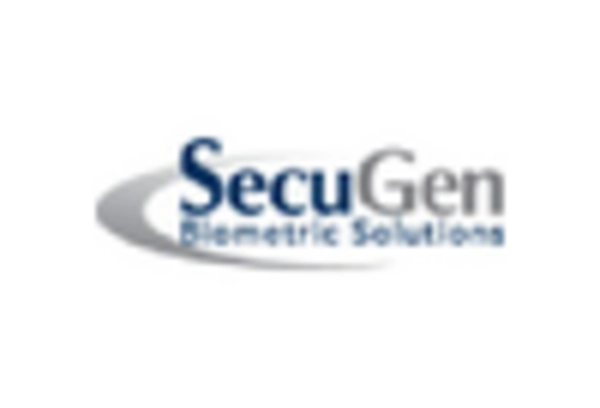Emergence of Smart City Initiatives
The emergence of smart city initiatives is influencing the passport reader market in the US. As cities adopt smart technologies to enhance urban living, the integration of advanced passport readers into public infrastructure is becoming more prevalent. These systems facilitate seamless travel and improve security measures in urban areas. The passport reader market is likely to see increased collaboration between technology providers and city planners to develop solutions that align with smart city goals. This trend may lead to innovative applications of passport reading technology, further driving market growth and enhancing public safety.
Increasing Demand for Security Solutions
The passport reader market is experiencing a notable surge in demand for enhanced security solutions. As security concerns escalate, particularly in transportation and border control, agencies are increasingly adopting advanced passport readers to mitigate risks. The market is projected to grow at a CAGR of approximately 8.5% over the next five years, driven by the need for reliable identity verification systems. This trend is particularly evident in airports and government facilities, where the integration of sophisticated passport readers is becoming essential. The passport reader market is thus positioned to benefit from heightened investments in security infrastructure, as organizations seek to comply with stringent regulations and improve operational efficiency.
Regulatory Compliance and Standardization
Regulatory compliance is a critical driver for the passport reader market. Governments are implementing stringent regulations to ensure that border control systems meet specific security standards. This has led to an increased demand for passport readers that comply with international standards, such as ICAO (International Civil Aviation Organization) guidelines. The passport reader market is thus witnessing a shift towards devices that not only meet these regulations but also offer enhanced features for data protection and user privacy. As compliance becomes a priority, manufacturers are likely to invest in developing products that align with these standards, potentially increasing market competition and innovation.
Growth of International Travel and Tourism
The growth of international travel and tourism is a significant factor driving the passport reader market. As travel restrictions ease and global tourism rebounds, airports and border control agencies are investing in advanced passport reading technologies to manage increased passenger volumes efficiently. The passport reader market is poised to benefit from this trend, with projections indicating a potential increase in market size by over 15% in the next few years. Enhanced passport readers are essential for expediting the processing of travelers, thereby improving the overall travel experience and ensuring security at borders.
Technological Advancements in Scanning Capabilities
Technological advancements are significantly influencing the passport reader market. Innovations in scanning capabilities, such as OCR (Optical Character Recognition) and RFID (Radio Frequency Identification), are enhancing the accuracy and speed of passport verification processes. These technologies allow for quicker processing times, which is crucial in high-traffic areas like airports. The passport reader market is likely to see a shift towards more sophisticated devices that can handle multiple data formats and provide real-time updates. As a result, the market is expected to expand, with an estimated value reaching $1.2 billion by 2027, reflecting the growing reliance on technology to streamline border control operations.

















Leave a Comment